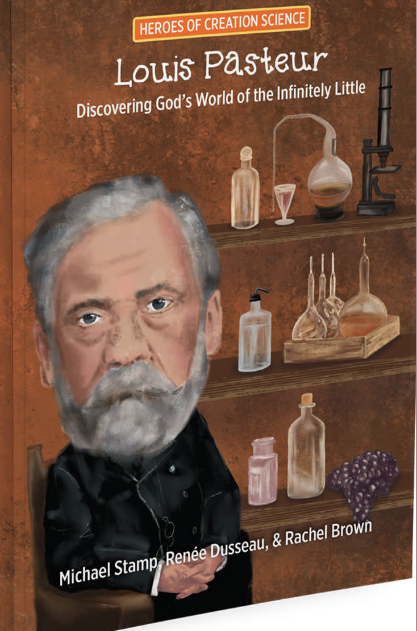Articles » Fossils
It goes without saying that all living creatures are interesting. Some, however, possess an extra mystique. These are organisms which have closely similar counterparts preserved in stone. Obviously a long history has been enjoyed by living examples of such fossil specimens. The living populations are called living fossils. But what about the rest of living creatures, whose preserved remains we do not find in low lying rock? Is their past any different? Let’s delve into the story of the living fossils in order to find out if they are really special and what is their real claim to fame. Read the rest of this entry »
If you have followed the adventures of scientists who collect fossils for a living, you may have noticed that travel to distant lands is often part of their profession. One such account by Derek Ager, published posthumously in 1993 (The New Catastrophism.Cambridge University Press) contains insights garnered from his travels and experiences during the course of a long career in palaeontology. Read the rest of this entry »
It’s fun to go to a museum to view the mounted dinosaur skeletons. In the Royal Tyrrell Museum in Drumheller, Alberta, the poses suggest tension. There are running dinosaurs, fighting dinosaurs, carnivorous dinosaurs about to kill herbivore victims, and others caught in the act of raiding dinosaur nests. The displays are actually stories without words. At a glance they communicate current scientific interpretations about dinosaur lifestyles. But these are not the really dramatic displays. It is the dinosaur skeletons still entombed in rock, which should rivet our interest. These artifacts cry out with information. Read the rest of this entry »
An old song runs over and over through my head: “We’re off to Alaska, land of the midnight sun!” Indeed this attractive feature of the far north attracts scores of tourists. However like many situations, this one involves good news and bad news. The good news is the endless summer days. The bad news, of course, is the endless winter nights. All living creatures thrive in the north during the summer. Plants grow quickly and animals rise their young. The winter however is not only dark, but also very cold. How, one wonders, would organisms fare there if the climate were still dark, but not cold? That’s an interesting question because there is scientific evidence for such a situation in the past. Some of the evidence is Canadian and some is American. Read the rest of this entry »
Some people may wonder why we pay so much attention to fossils. These artifacts, of course, are the traces preserved in rock, of organisms that lived some time in the past. Well why do we concern ourselves so much about organisms which are dead and gone? After all, human biology, the environment, the wonderful diversity of organisms alive today, and new products and machines are interesting enough and of current value besides. Read the rest of this entry »
One might suppose, judging by this title, that the beaches in Canada’s maritime provinces are not happy places to visit. Actually they are beautiful. Nevertheless, the story of these landscapes provides remarkable food for thought. Read the rest of this entry »
What a glorious occasion it was. On Tuesday, November 9th, I had the opportunity to hear Dr. Vij Sodera, a surgeon from the United Kingdom, speak on “Human Fossils: the myth of evolution from apes.”
As a medical doctor, Vij Sodera compared various skeletons that have been found, and concluded there is no evidence for evolution. The artifacts represent either apes or humans, but there are no missing links or transitional forms. Of special interest to me were two aspects of the discussion: one on skulls and the other on feet. Read the rest of this entry »
Some of the first preserved fossils were trilobites. Most paleontologists thus consider trilobites to be one of the most ancient of known fossil groups. Fortunately, a large number of well-preserved examples exist, which allows a detailed study of the animal. As a result, much is known about its well-designed, complex eye. New research on the workings of the trilobite eye shows that it is far more complex and better designed than thought even just a few years ago. Such a discovery is contrary to evolution theory. Read the rest of this entry »
In April 2006 Neil Shubin and others published an account of Tiktaalik, a fish fossil from Ellesmere Island in Canada’s north. More recently, scientists and the media alike have hailed this fossil as incontrovertible proof that the creationists are wrong. This fossil supposedly demonstrates that some fish developed legs in place of fins and left their watery habitat to “invade the land”. Read the rest of this entry »
The mayor of New York City was at the news conference on May 19, 2009. The event was accompanied too by the showing of a special documentary film on TV, publication of a book on the topic and the unveiling of an interactive website. What could the occasion be? One of the individuals involved, Jorn Hurun of Norway, declared: “Any pop band is doing the same thing. Any athlete is doing the same thing. We have to start thinking the same way in science.” Read the rest of this entry »
We don’t often think that extinct animals might have been examples of wonderful design, but they were! Even if we did reflect on extinct animals which were particularly well designed, we probably would not choose sauropod dinosaurs for that special category. Sauropod dinosaurs, you may remember, were the large plodding, four-footed specimens with long necks and long tails. They were probably the largest animals ever to have lived on land. They all grazed on plants. This was no doubt a good thing, since they probably were too slow to catch anything. So, you may well ask, what could be so special about these awkward looking creatures? Plenty! Read the rest of this entry »
The long awaited Illustra Media DVD on the Cambrian fossil record has finally been released. It was worth waiting for! The results are sensational. As far as visual effects go, this one exceeds the quality of Unlocking the Mystery of Life, and The Privileged Planet which Illustra Media also produced, and which set a new high standard for videos about nature. Read the rest of this entry »
Creation Science Association of Alberta is delighted to announce that Dr. Marcus Ross has agreed to speak at our creation weekend in Edmonton on Friday and Saturday, October 15 and 16, 2010. This young scientist brings with him a wealth of experience and expertise. He graduated with a B.S. from The Pennsylvania State University, a M. S. in Paleontology at south Dakota School of Mines and Technology and a Ph.D. in Geosciences from University of Rhode Island. His doctoral thesis dealt with the abundance and spread of mosasaurs, marine reptiles which are found in Cretaceous sediments, rock levels similar to those of many dinosaurs. Read the rest of this entry »
“Beyond the Bare Bones” is the theme of CSAA’s Creation Weekend October 15 and 16, 2010 with palaeontologist Dr. Marcus Ross. All the events will take place at Mill Woods Assembly, 66 Street and 23 Avenue in Edmonton. Read the rest of this entry »
John Whitcomb and Henry Morris’ 1961 classic The Genesis Flood was, of course, a wonderful work. Countless people, among them many scientists, have been positively influenced by its message. In the ensuing half century however, a lot of new information and many new arguments against “the flood” have appeared. The time has long since come for an update of the 1961 work. Read the rest of this entry »






